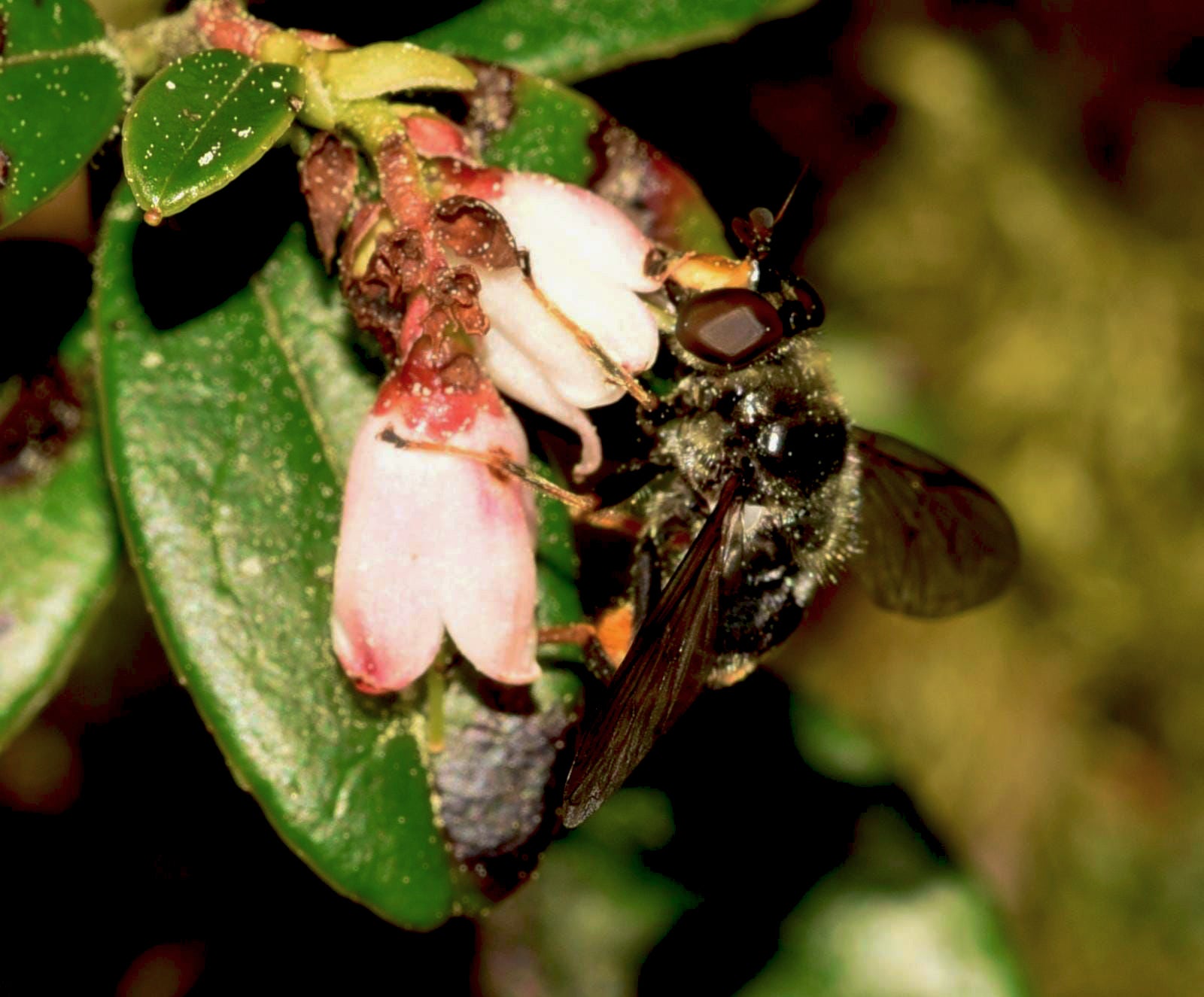Endangered adult pine hoverfly spotted in wild for first time in years
The sighting is said to be an ‘early sign of success’ for conservation efforts by the Rare Invertebrates in the Cairngorms project.

A critically endangered adult pine hoverfly has been spotted in the wild in Britain for the first time in nearly a decade following conservation efforts, experts have said.
The discovery comes after staggered releases of larvae in October 2021 and March 2022 at RSPB Abernethy and Forestry and Land Scotland Glenmore, sites carefully managed for conservation.
Larvae were bred as part of the Royal Zoological Society of Scotland’s (RZSS) conservation breeding programme for the species, which is based at Highland Wildlife Park.
The insects act as both pollinators and waste recyclers and are important to forest ecosystems.
This discovery is a huge step for pine hoverfly conservation and recovery
Experts said the sighting of the adult is an early sign of success for the Rare Invertebrates in the Cairngorms (RIC) project.
Dr Helen Taylor, conservation programme manager at RZSS, said: “This discovery is a huge step for pine hoverfly conservation and recovery, showing the larvae which were released are surviving through to adulthood.
“There is now hope these adults will mate and produce a new generation of wild pine hoverflies, which is a key step in establishing new wild populations.
“As one of our most endangered native species, pine hoverflies are important to forest ecosystems, acting as both pollinators and waste recyclers.
“These releases also allow us to further develop our knowledge of their behaviours in the wild.
“For a species so little is known about, every observation improves our understanding of what pine hoverflies need to survive and thrive, helping us select the best habitat for future releases and continually evolve our techniques within the RZSS breeding programme.”
The RIC project is a partnership between the RSPB, Cairngorms National Park Authority, RZSS, Buglife Scotland, Butterfly Conservation Scotland and NatureScot.
Genevieve Tompkins, RIC project officer, said: “Habitat management carried out for pine hoverflies creates a more diverse forest, benefitting multiple different species, so this is a fantastic moment for Caledonian pine forest ecosystems as a whole.
“We will better understand the true level of success of this year’s breeding season in September, when we survey for new larvae produced by the adults that are currently emerging. But for now, it is wonderful to be able to celebrate this exciting moment.”
The RIC project is currently funded by the RSPB and Cairngorms National Park Authority, with some of the habitat work for the release funded by NatureScot’s Nature Restoration Fund.
Funding for the RZSS breeding programme came from Cairngorms National Park Authority, Forestry and Land Scotland, Marvelous Europe, NatureScot and the National Geographic Society, alongside support from the Scottish Government’s zoos and aquariums fund and players of People’s Postcode Lottery.
Bookmark popover
Removed from bookmarks